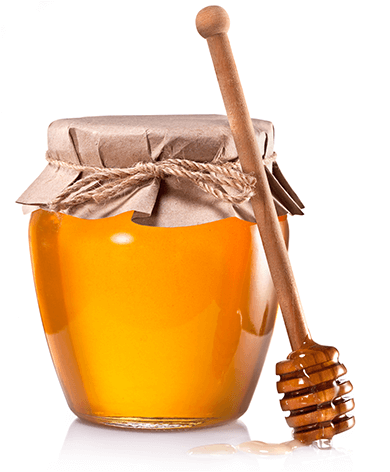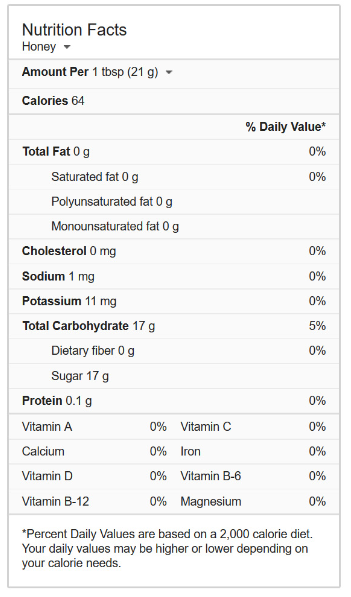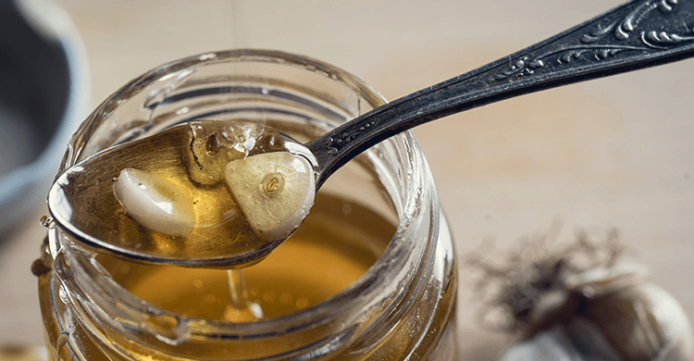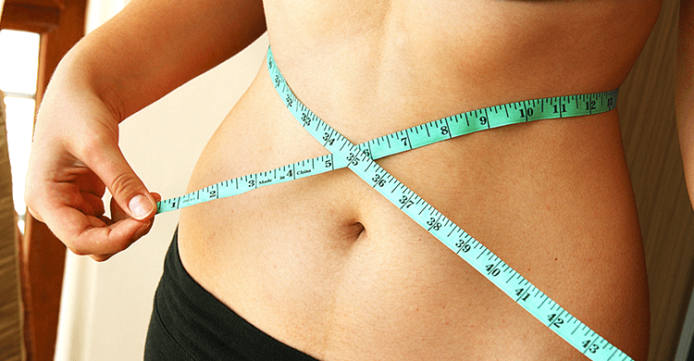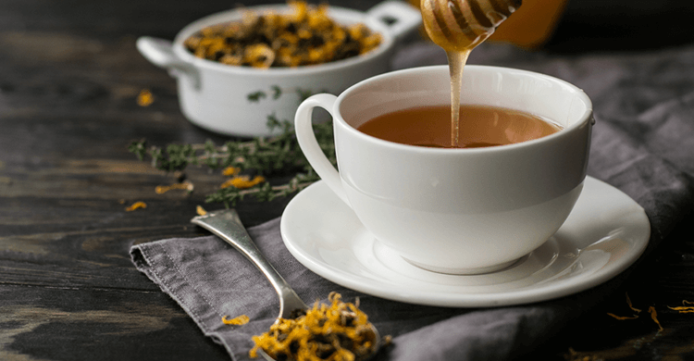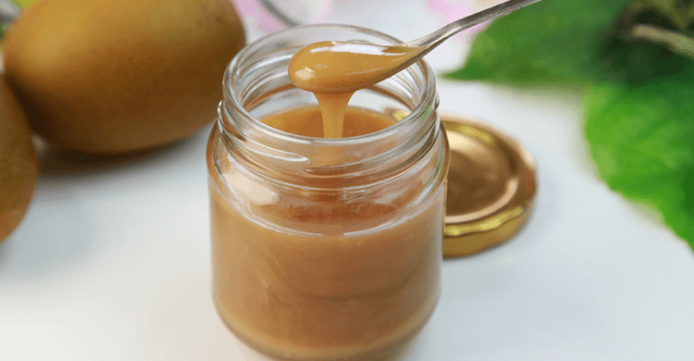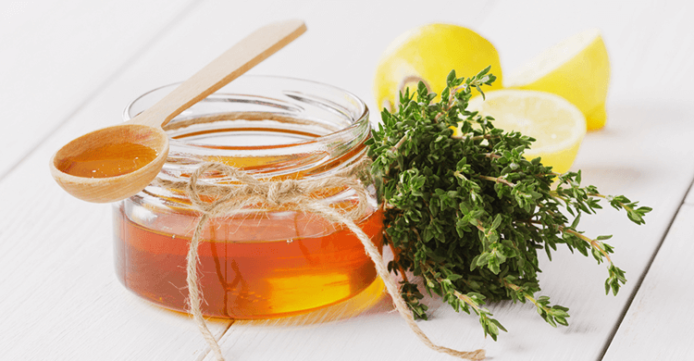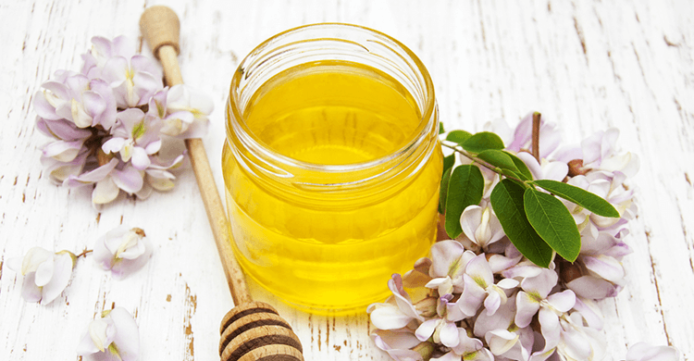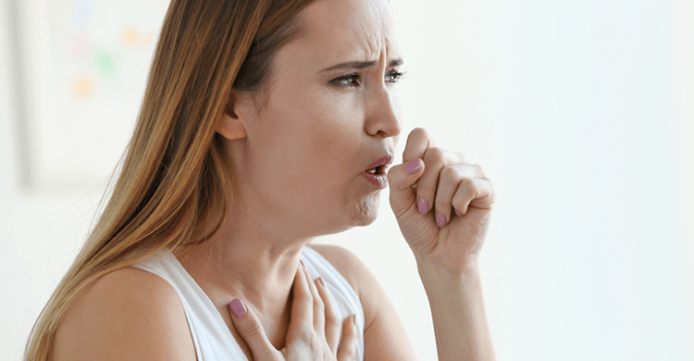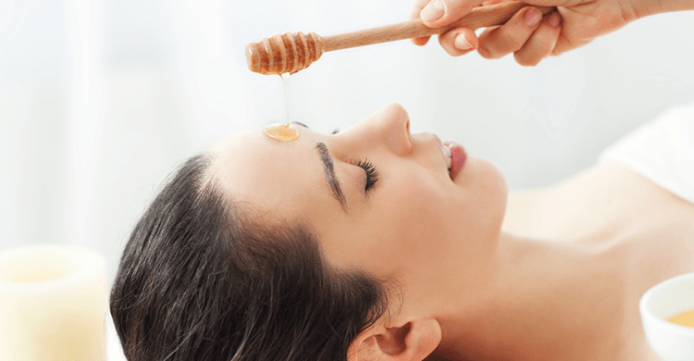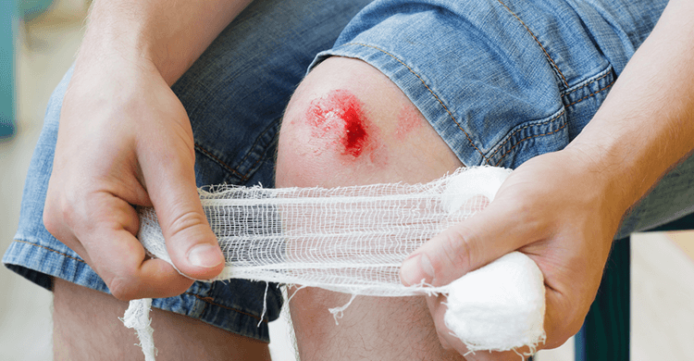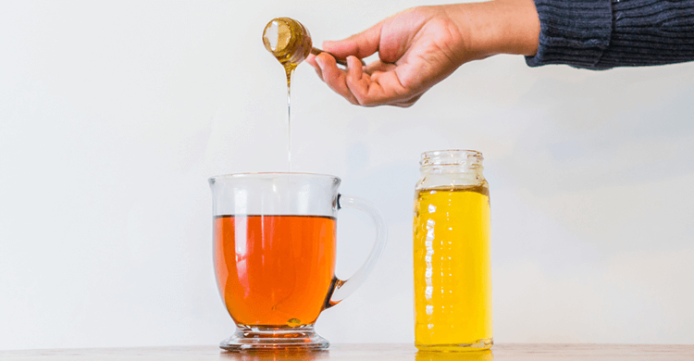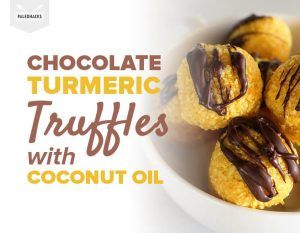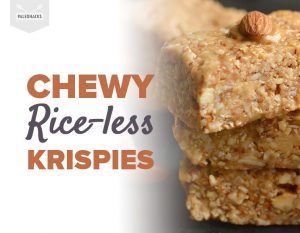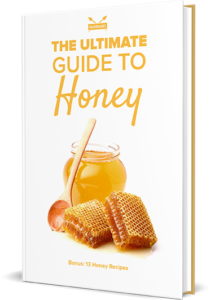Paleohacks Presents
The Ultimate Guide to
Honey
It’s sweet, it’s golden, and you’ve been squeezing it into your tea, drizzling it onto your fruit bowls, and slurping it off a spoon since you were old enough to ask for it.
The consumption of honey dates back much further than you might realize, with research showing it was first used 8,000 years ago by the Ancient Egyptians, Assyrians, Chinese, Greeks and Romans not just as a sweetener, but as a medicine ( 1 ). Discover more about this powerful golden liquid below!

What Is Honey?
Honey is a viscous substance produced by bees from the sugary nectar of flowering plants.
Bees extract flower nectar using their tube-shaped tongues, and then store it in their stomachs where an enzyme called invertase begins the honey-making process. The bees then fly back to their honeycomb, where they deposit this new honey.
At this point, the honey still contains a high water content, so the bees fan the liquid with their wings to remove the excess moisture. Once this moisture is removed, the bees cap their comb with beeswax as a seal. At this point, honey harvesters know the golden liquid is ready to be extracted.
Honey Nutrition Facts
One tablespoon (21g) of honey consists of:
- 64 Calories
- 0g fat
- 17g carbohydrates
- 17g sugars (blend of fructose and glucose)
- 0g protein
At first glance, it may seem like honey doesn’t have a lot to offer in terms of nutrients (2). However, you should know that honey is chock-full of over 200 compounds, including antioxidants and minerals that are extremely beneficial for your body. These include phenolics, peptides, organic acids, enzymes, flavonoids and tocopherols, to name a few (3).

The Natural Benefits of Honey
The potent compounds listed above offer a wide range of benefits – many of which the ancients were already aware of.
Antibacterial and Antifungal
Honey has been shown to have an inhibitory effect on some 60 types of bacteria, as well as many species of viruses and fungi. This effect is even seen on so-called superbugs like E. coli, Staph, and Salmonella, where its antimicrobial power is so strong that it works even if the honey is diluted up to 56 times (4).
The effect is caused by an enzyme in honey called glucose oxidase, which when ingested forms hydrogen peroxide, a potent antimicrobial (5).
Wound Healing
The ancient Egyptians, who included honey in 900 of their remedies, used the golden liquid as a topical ointment to heal infected wounds and also to embalm their dead (6).
Today, along with discovering honey’s natural disinfectant properties, scientists have found that honey possesses anti-inflammatory properties and also stimulates immune response and tissue regeneration in wounds (7). One case found that an amputee patient whose leg was infected with Pseudo and Staph, and who was not responding to regular treatment, healed completely in just 10 weeks after applying Manuka honey dressing pads (8).
Some of the types of wounds honey is effective in treating include (but aren’t limited to): abrasions, abscesses, amputations, bed sores and ulcers, burns, abdominal wounds, fistulas, diabetic, malignant, leprosy, traumatic, cervical, varicose and sickle cell ulcers, septic wounds, surgical wounds or wounds of abdominal wall and perineum.
Gut Health
Honey can be used to treat a wide range of gastrointestinal disorders, such as gastritis, ulcers, gastroenteritis, and diarrhea. It is also effective against bacterial infections of the gut, and can even prevent bacterial infections from taking hold along the walls of the digestive tract (9).
In addition, honey can help repair the mucus lining of the intestines (great for healing leaky gut and ulcers) and help kill the ulcer-causing H. pylori bacteria (10).
Weight Loss
Studies have shown that honey activates hormones that suppress appetite, and that replacing processed sugar and sweeteners with honey can reduce obesity (11).
Antioxidants
Honey contains powerful antioxidants, including flavonoids and phenolic acids, that fight the free radicals that cause aging and disease and can even help prevent DNA damage. These compounds are also known to be anti-carcinogenic (fight cancer) and give your immune system a boost (12).
Cardiovascular Health
The phenolic compounds in honey have been shown to reduce the risk of coronary heart disease (CHD) by improving dilation of blood vessels and preventing the clotting of blood platelets. In addition, honey has also been found to reduce LDL (bad) cholesterol and reduce blood pressure (13).
Natural Energy Boost
Due to honey’s natural concentration of glucose sugars and beneficial compounds, researchers have labeled it the “perfect fuel” for energy before exercising. In studies, honey performs just as well as artificial glucose energy packets when it comes to physical energy (14).

Raw Honey vs Processed Honey
Before you start gulping down those honey bears in the grocery store, know that the type of honey you grew up with isn’t the same as the honey that gives you all of these benefits. For that, you need raw honey.
Processed honey – the kind sitting in those cute bear bottles – is anything but beneficial. It has been heated, filtered, and chemically refined to such an extent that most of its enzymes and nutrients are gone, and what is left is comparable to sugar syrup.
True honey, with all of its nutrients, antioxidants, and subsequent benefits, is raw, organic, unpasteurized, and gently filtered without heat (although some raw honeys do contain chunks of the honeycomb itself). This allows it to retain all of its delicate enzymes and other compounds, including beneficial bits of propolis and pollen.
Raw honey will most likely look different than regular honey, and can range from an opaque white color to a dark amber liquid. It will most likely be thicker than the honey you’re used to. Be sure to look on the label for “raw,” or “unpasteurized,” to be sure your honey is truly raw.

Types of Raw Honey
Aside from the standard raw honey, there are several other types with different benefits and properties below.
Manuka Honey
Manuka honey, produced by New Zealand bees pollinating the Manuka bush, is considered one of the most healing honeys in the world. Research shows it is far richer in enzymes and antibacterial activity than regular honey, and even comes with its own global standard for medicinal quality, called the unique Manuka factor (UMF) (15).
You can use Manuka honey as an extra-strength antibacterial to fight bacterial overgrowths in your gut, disinfect wounds, treat ulcers, heal burns, and help relieve inflammation associated with IBS (16, 17).
To make sure you’re getting genuine UMF Manuka honey, look for a UMF level of at least 10 on the Manuka label for general healing. A UMF of 16 and above is considered superior, but only at 1 tablespoon at a time for serious conditions.
Thyme Honey
Thyme honey is honey made from bees that pollinate wild thyme flowers. It has the highest antioxidant value of dark herb honeys such as raspberry, hawthorn and black chokeberry honeys, which give it superior anti-aging and anti-cancer properties (18). It does have a different, more herb-y flavor than regular honey, but is still a delicious alternative.
Acacia Honey
Acacia honey is another popular honey you might see at your local health food store. It comes from the flowers of a tree often referred to as the black locust tree, and has been studied for its effectiveness in healing wounds (19). Acacia honey has a lighter, more floral taste than other honeys.

Uses for Honey
The diversity of ways in which you can use honey is virtually unlimited. A few honey recipes and suggestions:
DIY Cough Syrup
Stir together 3 tablespoons fresh lemon juice, 1/4 cup raw honey and 2 tablespoons coconut oil in a saucepan over very low heat (just enough to begin to melt the coconut oil). Take a spoonful or a tablespoon as needed and store the rest in a glass jar in the fridge for up to a month.
DIY Face Mask
For a simple face mask to combat fine lines, fight acne and plump your skin, simply spread a thin layer of raw honey on your face after cleansing and let sit for 15-20 minutes.
Heal Scratches, Nicks and Burns
As you saw earlier, raw honey has potent, wound healing properties. To harness these, rub an even layer of raw or Manuka honey over wounds or sores and cover with a bandaid or other clean dressing.
Natural Sweetener
Of course, honey’s sweet taste makes it an excellent natural sweetener for tea, smoothies, and in other recipes where you need a hint of sweetness.
Sleep Aid
Taking a spoonful of honey before bed has been shown to improve sleep and help you get to sleep.
Soothe Digetive Woes
Honey has been shown to reduce inflammation, act as an antibacterial, and feed the good bacteria in your gut – all good things when it comes to easing digestive troubles. Mix a spoonful with one tablespoon apple cider vinegar in a glass of water and drink as needed.

Where to Buy Honey
You can find raw honey in your local health food store, as well as larger health food chains like Whole Foods and online on sites like Amazon and Thrive. Many of these may also carry Manuka honey, due to its rise in popularity as a medicine.
Alternatively, you can see if any of your local farmers markets carry raw, unprocessed honey, so you can get it as close to home as possible.
If you’re looking for rarer varieties like thyme and neem honeys, your best bet will be to look online. Be sure these are also raw and unprocessed.

Honey FAQ
Here are some of the most frequently asked questions about Honey:
Q: Does honey expire?
A: When honey is raw, properly sealed, and uncontaminated by water or other particles, it can last for years or even decades. However, over time, your honey may darken or crystallize (again, this will probably take years), and it will be up to you if you’d like to try honey that is a few years old.
Q: Why are some raw honeys clear, while others are opaque or contain flecks of material?
A. Raw honey can either be filtered or unfiltered, depending on the brand. If you notice flecks in your raw honey, more often than not these are bits of pollen or honeycomb and are nothing to worry about.
Q: Can diabetics eat honey?
A. Sure! This might be surprising, but raw honey has been found to have no effect on the blood sugar levels of diabetics (20). Keep in mind this is for natural, raw honey, so if you’re diabetic, be sure to triple-check that your honey is raw.
Q. Is honey safe for infants?
A: Even with all of the minerals and enzymes present in raw honey, it’s still recommended to wait until children are at least one year old before trying it out. This is because the immune system is still developing during this first year.
Q: How should I store honey?
A: Honey is best stored at room temperature, although you can store it in the fridge if you prefer.
Q: Can honey cause allergic reactions?
A: If you have or suspect you have pollen or other bee-related allergies, you should avoid raw honey.

Honey Recipes
A Final Word About Honey
There’s no doubt about it: raw honey is a true superfood with virtually limitless benefits.
However, more does not equal better, and that is doubly true in the case of honey. This is because for every one of its benefits, honey is still very high in sugar. Overdoing it on sugar (be it from natural sources or refined sources) can lead to a whole host of problems, including weight gain.
In short, be mindful of how much honey you’re consuming and remember: a little goes a long way.
Enter Your Email Address Below To Get Our FREE Ultimate Guide to Honey
What’s your favorite way to use Honey? And why?
Leave a comment below, and share your experience!


